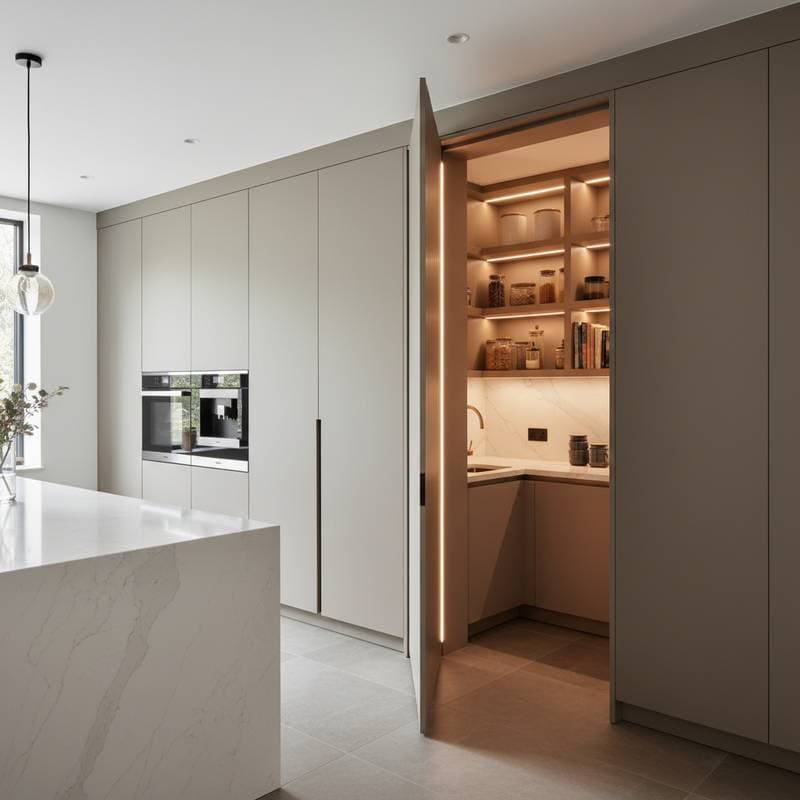Wet Rooms Deliver 15 Percent Higher ROI Than Tubs in 2025
Wet rooms transform bathroom remodels in 2025 by offering a 15 percent higher return on investment compared to traditional tub installations. These barrier-free spaces feature seamless waterproofing across floors and walls, which promotes accessibility, simplifies maintenance, and enhances resale value. Homeowners benefit from a modern aesthetic that combines functionality with enduring appeal, even though initial costs exceed those of standard setups.
Wet rooms adapt well to diverse home needs, from compact guest bathrooms to luxurious primary suites. They support aging-in-place strategies through step-free access and flexible layouts. Current trends favor minimalist designs with high-performance materials that maximize space and durability.
Advantages and Drawbacks
Advantages
- Elevated property value. A completed wet room installation typically increases home worth by 10 to 15 percent over a conventional tub configuration.
- Simplified cleaning routines. Reduced seams and corners minimize mildew accumulation and ease daily upkeep.
- Enhanced accessibility features. Level-entry designs accommodate users of all ages and mobility levels without thresholds.
- Contemporary visual appeal. Uniform flooring and frameless glass enclosures expand perceived room size.
- Versatile functionality. Configurations support efficient showers or indulgent spa experiences as required.
Drawbacks
- Elevated initial expenses. Comprehensive waterproofing demands additional materials and skilled labor.
- Exact drainage specifications. Inadequate floor sloping leads to water accumulation and potential issues.
- Reduced enclosure options. Open formats provide less visual separation from adjacent areas.
- Potential moisture retention. Effective ventilation systems prove essential to control humidity levels.
- Challenging self-installation. Demanding waterproofing techniques leave little margin for error.
Professional Installation Versus DIY Approaches
Constructing a wet room presents significant challenges for inexperienced individuals due to requirements for waterproof membranes, specialized drains, and accurate floor gradients. Projects generally span four to ten days, influenced by room dimensions and finishing details.
DIY Elements to Consider
Essential tools encompass trowels, membrane application kits, tile-cutting saws, and precision leveling devices. Common pitfalls involve suboptimal sloping, incomplete membrane coverage, and drain connection failures. Even minor errors risk extensive water damage to substructures.
Situations That Warrant Professional Expertise
Engage certified professionals for projects involving structural modifications or plumbing adjustments. Second-story locations or slab foundations demand specialized handling to avoid complications. Properties slated for imminent sale benefit from guaranteed workmanship and compliance assurances.
Qualified contractors adhere to regulatory standards and deliver reliable outcomes. Reputable waterproofing solutions frequently include a ten-year guarantee, which appeals to prospective buyers during transactions.
Upkeep and Durability
Properly constructed wet rooms endure for 20 years or longer with routine care. Core systems depend on impermeable barriers that resist degradation absent physical compromise.
Essential Maintenance Practices
- Dry surfaces promptly after use to avert residue buildup.
- Apply pH-neutral solutions to grout monthly for thorough cleaning.
- Inspect and renew silicone seals yearly if degradation appears.
- Operate exhaust fans sufficiently to eliminate excess moisture.
Protective sealants for tiles and grout prolong service life and preserve aesthetics. Promptly address any detected leaks by evaluating underlying membrane integrity and initiating repairs.
Regional Influences on Design and Cost
Variations in local labor expenses, regulatory frameworks, and environmental factors shape project viability and budgeting.
- Coastal environments. Prioritize robust moisture management with rust-resistant hardware and specialized sealants.
- Colder regions. Integrate radiant floor heating to counteract the coolness of tiled surfaces.
- Dense urban settings. Anticipate increased expenses from elevated labor rates and permitting processes.
- Historic properties. Reinforce subfloors to accommodate added weight from new installations.
- Earthquake-prone areas. Employ resilient grouting and fortified connections to mitigate fracture risks.
Consult municipal guidelines for mandatory waterproofing protocols and drainage capacities. Certain jurisdictions mandate pre-tiling examinations of protective layers.
Essential Safety Measures
Wet rooms necessitate vigilant planning to mitigate slip hazards and water ingress.
Critical Safety Guidelines
- Select tiles with a wet friction coefficient exceeding 0.6 for secure footing.
- Position reinforced grab bars adjacent to entrances and benches.
- Utilize damp-rated electrical components with prescribed clearance distances.
- Incorporate adequate airflow systems to curb mold development.
- Verify that floor inclines efficiently channel water toward drains.
During conversions of existing areas, engage a plumber to assess drain adequacy. Regulations often specify minimum 2-inch pipe diameters for expansive shower surfaces.
Steps to Implement Your Wet Room Project
Begin the process by sketching a detailed layout that delineates the wet area and water flow routes. Obtain estimates from no fewer than three vetted specialists in barrier-free systems. Inquire about coverage terms, drainage varieties, and preferred membrane products, along with client testimonials from comparable installations.
To optimize resale potential, opt for subdued color palettes and ample illumination. Incorporate practical elements like recessed shelves or integrated seating. Reserve vibrant patterns for personal enjoyment in long-term residences.
This upgrade revitalizes living spaces with enhanced usability and openness. Precise execution and diligent maintenance yield sustained benefits, including superior comfort and financial returns.
Frequently Asked Questions
What are the cost differences between a wet room and a tub replacement?
Tub swaps range from $6,000 to $9,000 on average, whereas wet rooms cost $12,000 to $17,000. Expenses rise due to extensive waterproofing and intricate tiling.
Does a wet room demand unique flooring materials?
Affirmative. Surfaces require slip-resistant, impermeable coverings such as porcelain tiles, sealed stone, or polished microcement.
Is second-floor installation feasible for wet rooms?
It is possible with structural enhancements and meticulous sealing. Professionals ensure gradient accuracy and safeguard against downward seepage.










